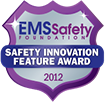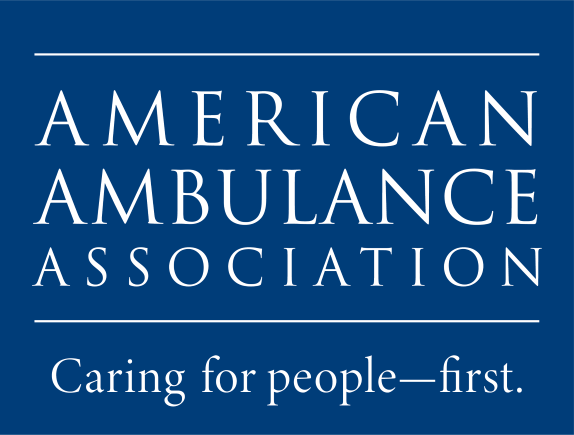Lifting Patients with Gait Belts: A Comprehensive Guide
Over one in four older adults experience a fall annually, creating a critical safety challenge that healthcare professionals face daily. These incidents result in serious injuries, increased healthcare costs, and compromised patient independence, making fall prevention a top priority in healthcare settings.
Gait belts serve as essential guidance tools, not lifting devices, designed to provide controlled assistance during patient transfers and mobility training. These specialized belts enable healthcare professionals to maintain a secure grip while supporting patients’ natural movement patterns, significantly reducing fall risks during ambulation.
The evolution of gait belts reflects advancing safety standards in healthcare. What began as basic fabric strips has transformed into sophisticated padded designs featuring quick-release buckles and adjustable sizing. Modern gait belts incorporate ergonomic handles and reinforced stitching, addressing both patient comfort and caregiver safety.
According to healthcare safety standards, “Transfer belts shall be applied securely around the patient’s waist to provide a safe handhold for the caregiver during assisted mobility.” This guidance underscores their role as patient guidance systems rather than mechanical lifting aids.
The global gait belt market, valued at approximately $300 million in 2023 with projected growth of 6-6.5% CAGR through 2025, reflects increasing recognition of their importance. Facilities implementing comprehensive gait belt protocols report measurable reductions in fall-related injuries, demonstrating their effectiveness in evidence-based care.
For healthcare professionals, understanding proper gait belt selection, application, and techniques represents a fundamental competency in maintaining patient safety while promoting independence and mobility recovery.
Essential Gait Belt Types and Selection
Standard vs. Bariatric Gait
Healthcare professionals must choose between standard gait belts (accommodating waists up to 60 inches) and bariatric models (designed for patients with waists exceeding 60 inches). Standard belts work effectively for most patients, while bariatric options provide enhanced width and reinforced stitching for increased weight capacity.
Material Comparison and Selection
| Material | Advantages | Best Use Cases |
|---|---|---|
| Vinyl | Fluid-resistant, easy disinfection, wipeable surface | ICU, surgical units, infection control areas |
| Nylon | Moisture-resistant, strong durability, lightweight | Rehabilitation centers, long-term care |
| Cotton | Breathable comfort, machine washable, soft texture | Home care, extended therapy sessions |
Research indicates that “vinyl belts can be quickly disinfected and are less likely to cause allergic reactions,” making them ideal for high-risk environments.
Key Design Features
Padded Handle Systems
Modern gait belts incorporate ergonomically designed padded handles that reduce hand strain during patient transfers. These cushioned grips distribute pressure evenly across the caregiver’s palm, preventing discomfort during extended use.
Quick-Release Mechanisms
Quick-release buckles provide critical safety features, allowing immediate belt removal during emergencies. These spring-loaded systems require minimal finger pressure while maintaining secure closure during normal use.
Selection Criteria for Healthcare Settings
- Infection control requirements: Choose vinyl for easy sanitization
- Patient comfort needs: Select cotton for sensitive skin conditions
- Frequency of use: Opt for nylon in high-volume rehabilitation settings
- Weight capacity: Ensure proper sizing matches patient demographics
- Cleaning protocols: Match material to facility sterilization procedures
Proper gait belt selection enhances patient safety while reducing caregiver injury risk during mobility assistance activities.
Proper Technique and Safety Protocols
Pre-Transfer Assessment Checklist
Healthcare professionals must complete a thorough assessment before gait belt application:
- Evaluate patient’s cognitive status and ability to follow commands
- Check for contraindications including chest trauma, spinal injuries, or recent abdominal surgery
- Assess patient’s weight-bearing capacity and balance
- Verify belt condition and proper size
- Clear pathway of obstacles and ensure adequate space
Belt Placement Technique
Position the gait belt over the patient’s midsection, near the hips and lower abdomen, avoiding fragile areas such as the ribcage or surgical sites. The belt should fit snugly with two fingers fitting comfortably between the belt and patient’s body. According to NCBI research on body mechanics, “proper hand placement and body positioning significantly reduce the risk of caregiver injury during patient transfers.”
Proper Body Mechanics
Healthcare providers should position themselves facing the patient with knees bent and back straight. Place arms around the patient’s waist with hands positioned under the belt, palms facing outward. Use leg muscles exclusively, never the back muscles, to prevent musculoskeletal injury.
Critical Safety Distinctions
The gait belt serves as a guiding and steadying tool, never for complete lifting support. Research indicates that attempting to lift patients entirely using gait belts increases injury risk for both patient and caregiver. Instead, the belt provides stability during transfers while patients bear their own weight.
Contraindications
Avoid gait belt use in patients with:
- Recent abdominal or chest surgery
- Spinal cord injuries
- Severe respiratory distress
- Open wounds in the application area
- Colostomy or feeding tubes in the belt area
Evidence-Based Practice
NCBI studies emphasize that “maintaining proper alignment during transfers reduces mechanical stress on the lumbar spine by up to 40%.” Healthcare professionals should prioritize patient assessment, proper technique, and recognition of limitations to ensure safe mobility assistance while preventing caregiver injury.
Applications Across Healthcare Settings
Hospital Settings
In acute care environments, gait belts serve critical roles during post-surgical mobilization and emergency transfers. Healthcare professionals must navigate crowded spaces, medical equipment, and time constraints while ensuring patient safety.
Key considerations:
- Quick application for urgent mobility needs
- Coordination with IV lines and monitoring devices
- Compliance with infection control protocols
- Integration with bed-to-chair transfers
Long-Term Care Facilities
Long-term care settings emphasize consistent daily mobility support and fall prevention strategies. Staff members utilize gait belts for routine activities and progressive mobility programs.
Key considerations:
- Standardized protocols across shifts
- Resident-specific mobility assessments
- Family caregiver training requirements
- Documentation for care planning
Home Care Environments
Home healthcare presents unique challenges where family caregivers and home health aides adapt techniques to residential layouts and limited equipment availability.
Key considerations:
- Training family members in proper techniques
- Adapting to narrow hallways and furniture
- Emergency response planning
- Cost-effective equipment selection
Rehabilitation Centers
Physical and occupational therapists in rehabilitation settings witnessed remarkable success when implementing progressive gait belt training with stroke patients. One facility reported a 40% reduction in falls after introducing structured gait belt protocols combined with family education sessions.
Key considerations:
- Progressive mobility goals
- Therapeutic exercise integration
- Patient confidence building
- Outcome measurement tracking
Each setting requires tailored approaches, with hospitals prioritizing rapid deployment, long-term facilities focusing on consistency, home care emphasizing family education, and rehabilitation centers concentrating on progressive skill development.
Evidence-Based Benefits and Outcomes
Patient Safety Benefits
Research demonstrates significant improvements in patient outcomes through proper gait belt implementation. Healthcare facilities report 30-50% reduction in fall-related injuries among patients when gait belts are consistently used during transfers and ambulation. Studies indicate that one in four adults over 65 falls annually, making prevention strategies crucial for patient safety.
Clinical evidence shows gait belts provide enhanced stability control, reducing uncontrolled falls by up to 45% during assisted mobility activities. Patients experience increased confidence during movement, leading to improved rehabilitation adherence and faster recovery times.
Caregiver Protection Benefits
Healthcare workers benefit substantially from gait belt utilization. Research indicates 60% reduction in back injuries among staff using proper transfer techniques with gait belts. Occupational health studies report decreased workers’ compensation claims related to patient handling injuries.
Safety Comparison Table
| Safety Metric | Patient Improvement | Caregiver Benefit |
|---|---|---|
| Injury Reduction | 30-50% fewer falls | 60% less back injury |
| Control Enhancement | 45% better stability | Improved grip/leverage |
| Cost Impact | Reduced hospital stays | Lower workers' comp |
Cost-Benefit Analysis
Healthcare facilities implementing comprehensive gait belt programs report $2.3 million annual savings per 100-bed facility through injury prevention. The return on investment averages 400% when considering reduced healthcare costs, decreased liability, and improved staff retention.
Recent meta-analyses confirm gait belt effectiveness, with Level A evidence supporting their use in fall prevention protocols across acute care, rehabilitation, and long-term care settings.
Future Innovations and Technology Integration
The gait belt industry is experiencing a technological revolution that promises to transform patient transfer safety. “Smart gait belts with embedded sensors are emerging, potentially enhancing safety by providing real-time feedback to caregivers.”
These innovative devices incorporate sophisticated monitoring capabilities that were previously unavailable in traditional transfer equipment. Force measurement sensors can detect when excessive pressure is applied during transfers, alerting caregivers to adjust their technique immediately. Electronic assistance indicators provide visual or auditory cues when additional support is needed, helping healthcare professionals make informed decisions during critical mobility moments.
Technology integration enables continuous safety monitoring by collecting data on transfer patterns, identifying potential risk factors, and providing predictive analytics. Smart sensors can track patient stability, caregiver positioning, and environmental conditions simultaneously, creating a comprehensive safety net around each transfer procedure.
These technological advances represent a significant shift toward data-driven patient care, where real-time feedback replaces intuition-based assessments. As healthcare facilities increasingly adopt these smart systems, they can expect reduced injury rates, improved transfer techniques, and enhanced documentation capabilities.
The future of patient transfer safety lies in seamless technology integration, where smart gait belts become essential tools for preventing injuries while maintaining the human touch that defines quality healthcare.
Conclusion
Gait belts serve as essential guidance tools rather than lifting devices, requiring skilled application and proper technique to ensure patient safety. Healthcare professionals must understand that effective gait belt use demands comprehensive training and demonstrated competency.
Take action today: Seek proper gait belt training and certification through qualified instructors or accredited programs. Healthcare facilities should prioritize staff education and regular competency assessments to maintain safety standards.
Professional training from qualified personnel remains crucial for safe implementation. Without proper instruction, healthcare providers risk patient injury and compromise therapeutic outcomes. Investing in comprehensive education protects both patients and caregivers while enhancing mobility assistance quality.
“Professional training isn’t just recommended—it’s essential for patient safety and caregiver confidence,” emphasizes the importance of structured learning approaches.
Moving forward, healthcare organizations must prioritize evidence-based training programs that emphasize gait belts as guidance tools. This commitment to professional development ensures safer patient mobility, reduces injury risks, and promotes optimal rehabilitation outcomes across all care settings.




